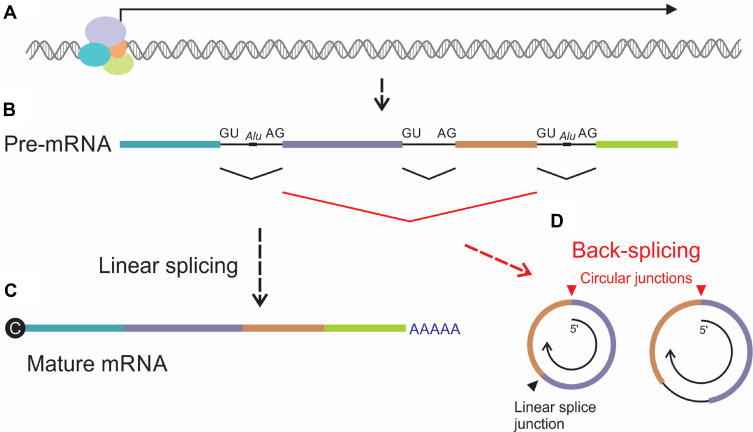Figure 1.
Schematic illustration of formation of circRNA by back-splicing. (A) Gene transcription generates (B) pre-mRNA sequences, which comprise exons (colored rectangles) and introns (intervening black lines). Alu repeats located within introns may play a role in circularization during back-splicing. (C) Canonical linear splicing of pre-mRNA joins upstream splice donors (GU) with downstream splice acceptors (AG) to link exons, remove introns and form mature mRNA with 5’ cap and 3’ poly(A). (D) Back-splicing, which involves circularization of RNA, entails coupling of downstream donor elements with upstream acceptors. Sequences at the resultant circular splice junctions (red arrowhead) are distinct from the sites of linear splicing (black arrowhead). circRNAs formed by back-splicing typically comprise combinations of exons but may also include introns. Arrow within the circRNAs represents 5’ to 3’ polarity of the pre-mRNA.

